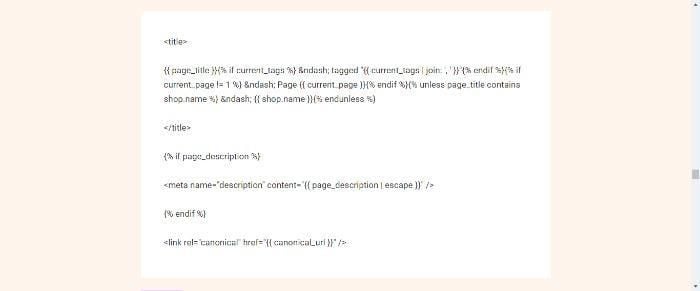What Are Canonical Tags?
By Neil Patel
Itching to learn about canonical tags? First, let me explain why they’re relevant to your website ranking.
There’s been a longstanding belief that Google penalizes duplicate content. In case you haven’t already heard, that’s not strictly true.
As Google search advocate John Muller explains:
“…it’s not so much that there’s a negative score associated with it,”
“It’s more that if we find exactly the same information on multiple pages on the web, and someone searches specifically for that piece of information, then we’ll try to find the best matching page.”
Additionally, on its ‘how to avoid duplicate content’ page, Google states:
“Duplicate content generally refers to substantive blocks of content within or across domains that either completely match other content in the same language or are appreciably similar.”
As Google makes clear, there are times when a website owner has a genuine reason for having duplicate content, like online stores or printer-only web pages. However, these duplicate pages can cause confusion for search engines, and they don’t always know which is the original or which page you want to prioritize.
How do you get past this? You could try 301 redirects or use top-level domains, but you could also use a canonical tag URL.
If you’re wondering what canonical tags are, or you want to know how they can help you, read on to find out more.
The Basics of Canonical Tags
In the most basic terms, a canonical tag is an HTML snippet (rel=canonical). As I’ve touched on in the intro, you implement a canonical tag when you want to indicate to the search engines which is the original page. For example, you might have multiple versions of a page if you’re an e-commerce site owner or if you’ve got a mobile and desktop version of your website.
Now, if you wanted the search engines to prioritize the mobile pages, you’d add a self-referencing canonical tag to the mobile version to tell the search engine to index that page. This means that the URL attached to the rel=canonical is the page itself.
In other words, once you implement canonical tags, the search engines know which pages to dismiss and which ones to display in the SERPs.
Canonical tags are simple to add to your page by including rel=”canonical” in your header, but what does this do for your SEO?
How Do Canonical Tags Help SEO?
Canonical tags are an essential part of any SEO strategy, enabling your site to rank higher. There are several ways they do this:
First, they tell search engines which URL version is the “correct” one, preventing duplicate content from ranking lower and ensuring you get the right page indexed.
Further, a canonical tag assists your SEO efforts in other ways, like:
Syndicated content: Canonical tags allow you to better manage syndicated content. When you syndicate content from one site to another, it’s important to ensure the search engines still reference the original content. Just add the rel=”canonical” tag to your …read more
Source:: Kiss Metrics Blog









